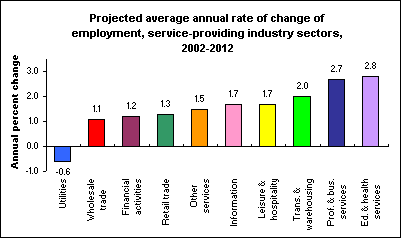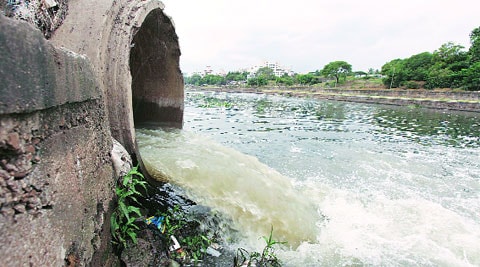Retrofitting a Roof Mounted Solar Photovoltaic (PV) Panel
 Introduction
Introduction
You’ve decided how many solar panels you need, you know the size of the panels and you know how you want them to be laid out. Now you’ve got to work out how to get them safely up to the roof, secure them and be certain that they will stay there.
This article describes some of the steps to take when carrying out a retrofit roof mounted solar PV installation. We don’t go into any classification of manufacturing processes detail about the electrical side, this article concentrates purely on the mechanical aspects of a typical retrofit PV installation.
We hope it will provide a useful background for clients and contractors who are considering the installation of a solar PV system.
Assessing the Roof and Identifying Risks
This part should be carried out on first inspection and referred to throughout the system design stage. A record should be kept of what you find (ideally with pictures). Some of the key aspects relevant to roof mounting solar panels and the potential dangers, include:
Fragile roofing materials, including insecure, inadequate, corroded or broken roof fittings, anything that the installer or materials could potentially fall through if weight was applied.
Any protection at the roof edges to stop the installer, tools and or materials falling i.e something to stop a person or equipment sliding down the roof and over the edge.
The presence of asbestos, lead and other contaminates that could cause problems if cut, damaged or disturbed. Remember to also look at flashings, guttering, pipes and pipe insulation.
Insecure, inadequate, rotten or broken roof supports and rafters that may not be strong enough or big enough to handle the increased weight loading or provide a secure connection for the mounting feet.
Existing waterproofing and flashings, any damp, staining or corroded areas may be an indication of underlying instability.
External influences such as the proximity of power lines that may cause difficulties or dangers during the installation.
Moss, lichen or anything else that may be slippy when walked on.
Once you have this information think about and record the ways in which the issues that you have identified could affect the installation including:
The suitability of the equipment that will be installed in relation to the mounting area.
The suitability of the equipment that will be used for the installation.
The safety of the installation team.
The safety of others who may be using the building or be close to the building whilst the installation is taking place.
The long term effect of the increased weight loading on the structure.
Any uncovered problems that could be made worse because of the PV installation or spread to affect the installation at a later date.
Once you have considered these factors you are then likely to have a good idea of the best way to overcome these issues and progress, whilst reducing risks and selecting the most suitable equipment for the PV system itself and the equipment needed to carry out the installation.
In many …

 Choosing from such a vast selection of industrial supplies in the marketplace can render paralyzed at the best of times if you have no specific selection process to govern your decision-making. Let us say for argument you are looking for some new power tools for a specific job and you decide that a new power drill is in order.
Choosing from such a vast selection of industrial supplies in the marketplace can render paralyzed at the best of times if you have no specific selection process to govern your decision-making. Let us say for argument you are looking for some new power tools for a specific job and you decide that a new power drill is in order. If you operate heavy duty vehicles then you need to ensure you are using a high performance alternator. You need to be sure you can rely on your vehicle day in and day out, in the toughest conditions which is why it is worth it to invest in a quality alternator. It really doesn’t matter the type of vehicle you are using, you need to ensure your vehicle will start when you need it, which is why a quality alternator is so critical.
If you operate heavy duty vehicles then you need to ensure you are using a high performance alternator. You need to be sure you can rely on your vehicle day in and day out, in the toughest conditions which is why it is worth it to invest in a quality alternator. It really doesn’t matter the type of vehicle you are using, you need to ensure your vehicle will start when you need it, which is why a quality alternator is so critical. Over the years I have used many different cleaning methods. There are as many cleaning methods as there are people. What works for me may not work for you and vice versa. Here I will show you how we manage to clean our home in 15 minutes a day.
Over the years I have used many different cleaning methods. There are as many cleaning methods as there are people. What works for me may not work for you and vice versa. Here I will show you how we manage to clean our home in 15 minutes a day. Bathroom is probably one of the most overlooked parts of the house if we’re going to talk about safety and hazards. For sure, it might appear harmless for most people especially if it’s ergonomically designed to suit our needs. However, research has consistently shown health hazards hidden within this structure and which highly deserve our full attention. In fact, studies have found out that in U.S. alone, an average of 640 people are estimated to get non-fatal to fatal bathroom-related injuries on a daily basis. And if you think this figure doesn’t encompass people of all ages, you might be missing some important health information because in reality, both children and the elderly are high-risk to get this injury. So how are we going to prevent this accident from taking place?
Bathroom is probably one of the most overlooked parts of the house if we’re going to talk about safety and hazards. For sure, it might appear harmless for most people especially if it’s ergonomically designed to suit our needs. However, research has consistently shown health hazards hidden within this structure and which highly deserve our full attention. In fact, studies have found out that in U.S. alone, an average of 640 people are estimated to get non-fatal to fatal bathroom-related injuries on a daily basis. And if you think this figure doesn’t encompass people of all ages, you might be missing some important health information because in reality, both children and the elderly are high-risk to get this injury. So how are we going to prevent this accident from taking place? Contaminants can steal productivity from your machine’s hydraulic system without you knowing it. Even a skilled operator might not notice a drop in responsiveness until the system has lost 15-20% of its power. This translates into five working days with only the performance of four. Imagine the loss in an industry such as mining.
Contaminants can steal productivity from your machine’s hydraulic system without you knowing it. Even a skilled operator might not notice a drop in responsiveness until the system has lost 15-20% of its power. This translates into five working days with only the performance of four. Imagine the loss in an industry such as mining. When deciding whether to inspect your roof, do a repair, or walk on your roof for any other reason, there are several steps you can take to ensure your safety. These safety procedures are often overlooked, causing accidents that can affect a person and their family for years to come. However, if you invest just a small amount of time educating yourself of the potential dangers of your roof, you may avoid these incidents all together.
When deciding whether to inspect your roof, do a repair, or walk on your roof for any other reason, there are several steps you can take to ensure your safety. These safety procedures are often overlooked, causing accidents that can affect a person and their family for years to come. However, if you invest just a small amount of time educating yourself of the potential dangers of your roof, you may avoid these incidents all together. From basic wiring installation to industrial control panel upgrades, an electrician’s everyday duties require frequent exposure to hazardous conditions. While thorough training is necessary to prevent accidents
From basic wiring installation to industrial control panel upgrades, an electrician’s everyday duties require frequent exposure to hazardous conditions. While thorough training is necessary to prevent accidents  While the economy may still be in recession, there are still many roadway and bridge construction projects being approved. In strong part due to stimulus money, firms are getting awarded many construction jobs through the federal and state governments. To ensure safe work sites for both the benefit of every worker and for compliance to safety guidelines and laws, specifically designed industrial equipment is the key to outfitting workers with the right PPE to do their jobs safely.
While the economy may still be in recession, there are still many roadway and bridge construction projects being approved. In strong part due to stimulus money, firms are getting awarded many construction jobs through the federal and state governments. To ensure safe work sites for both the benefit of every worker and for compliance to safety guidelines and laws, specifically designed industrial equipment is the key to outfitting workers with the right PPE to do their jobs safely. A great many centuries have passed since human society has evolved and transformed into its current form. Some could say that it’s gone the wrong way and should have chosen a more “natural” or even “spiritual” path. Perhaps, but it is still too early to tell. What we know for sure is that the very existence of our ancestors and the quality of our own life has always vastly depended on safety and efficiency of our tools. Regardless of what we would chose as an example (weapons, water pumps, grinding machines or coffee makers) one thing they always had in common – safety rules.
A great many centuries have passed since human society has evolved and transformed into its current form. Some could say that it’s gone the wrong way and should have chosen a more “natural” or even “spiritual” path. Perhaps, but it is still too early to tell. What we know for sure is that the very existence of our ancestors and the quality of our own life has always vastly depended on safety and efficiency of our tools. Regardless of what we would chose as an example (weapons, water pumps, grinding machines or coffee makers) one thing they always had in common – safety rules. It’s time to think green. To be a responsible citizen, you need to shift from the conventional consumerism method of throwing everything away and start recycling and reusing materials. You can start by cardboard recycling, which is one of the most used products, and it is also one of the most wasteful ones.
It’s time to think green. To be a responsible citizen, you need to shift from the conventional consumerism method of throwing everything away and start recycling and reusing materials. You can start by cardboard recycling, which is one of the most used products, and it is also one of the most wasteful ones.